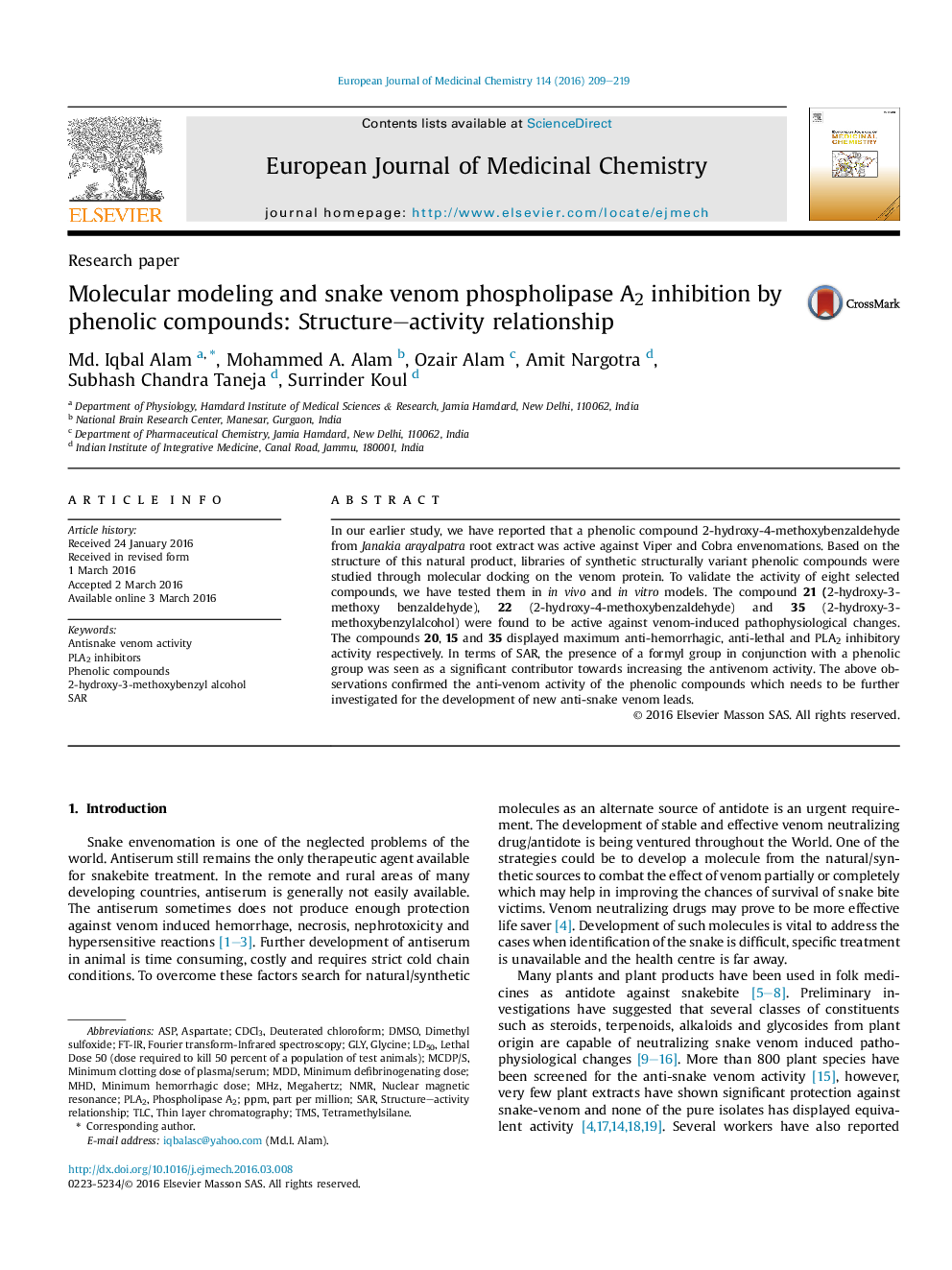| کد مقاله | کد نشریه | سال انتشار | مقاله انگلیسی | نسخه تمام متن |
|---|---|---|---|---|
| 1398644 | 1501102 | 2016 | 11 صفحه PDF | دانلود رایگان |

• Many Indian medicinal plants are used in folk medicine as an antidote against snake bite.
• 2-hydroxy-4-methoxybenzaldehyde from J. arayalpatra and its analogues were found active against Viper and Cobra venoms.
• A formyl group in conjunction with a phenolic group was found to be a significant contributor towards anti-venom activity.
• Structurally variant phenolic compounds were studied via molecular docking on the venom protein.
• Identified potent molecules through in silico chemistry which may lead to manifold anti-snake venom activity.
In our earlier study, we have reported that a phenolic compound 2-hydroxy-4-methoxybenzaldehyde from Janakia arayalpatra root extract was active against Viper and Cobra envenomations. Based on the structure of this natural product, libraries of synthetic structurally variant phenolic compounds were studied through molecular docking on the venom protein. To validate the activity of eight selected compounds, we have tested them in in vivo and in vitro models. The compound 21 (2-hydroxy-3-methoxy benzaldehyde), 22 (2-hydroxy-4-methoxybenzaldehyde) and 35 (2-hydroxy-3-methoxybenzylalcohol) were found to be active against venom-induced pathophysiological changes. The compounds 20, 15 and 35 displayed maximum anti-hemorrhagic, anti-lethal and PLA2 inhibitory activity respectively. In terms of SAR, the presence of a formyl group in conjunction with a phenolic group was seen as a significant contributor towards increasing the antivenom activity. The above observations confirmed the anti-venom activity of the phenolic compounds which needs to be further investigated for the development of new anti-snake venom leads.
Figure optionsDownload as PowerPoint slide
Journal: European Journal of Medicinal Chemistry - Volume 114, 23 May 2016, Pages 209–219